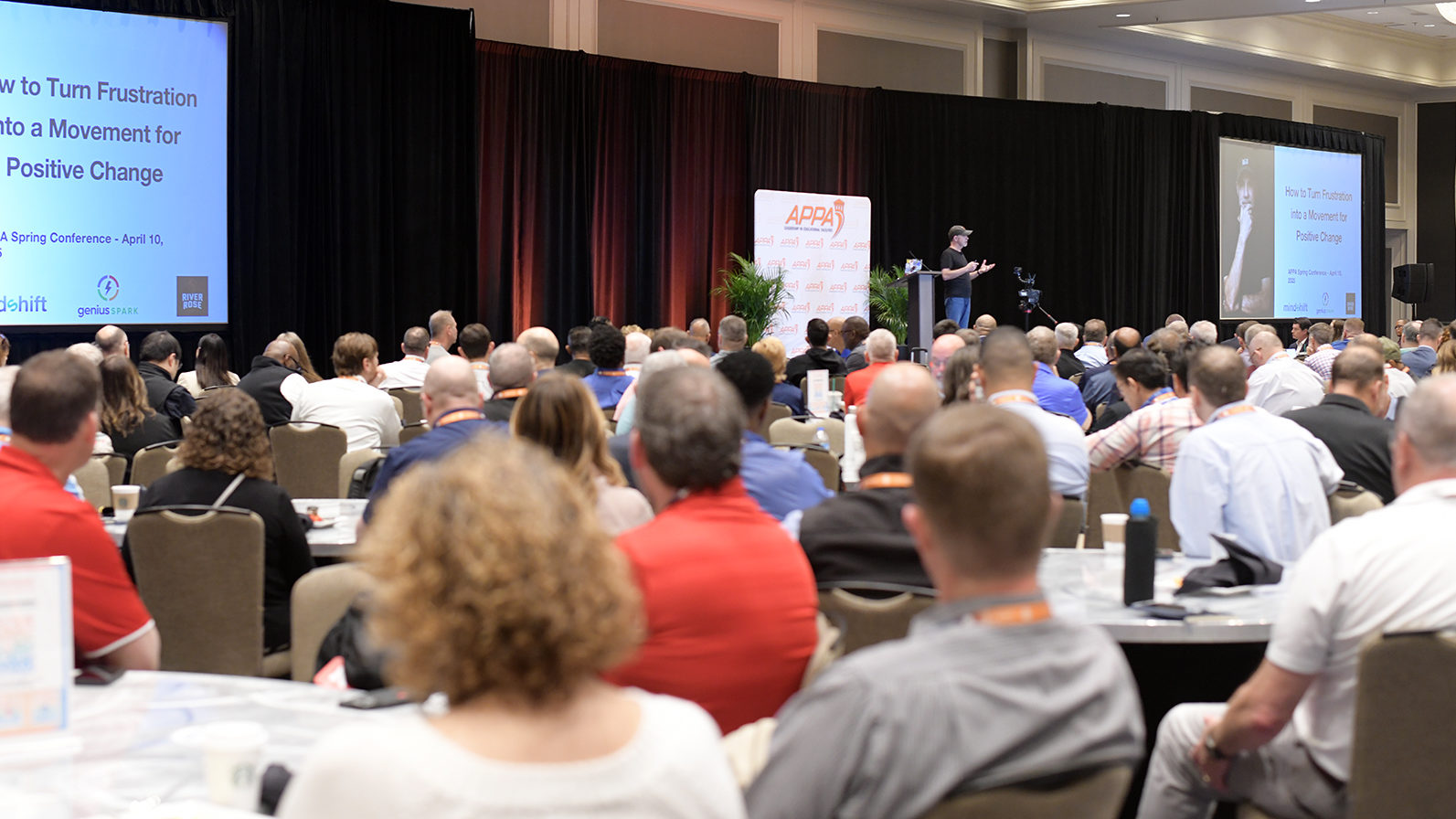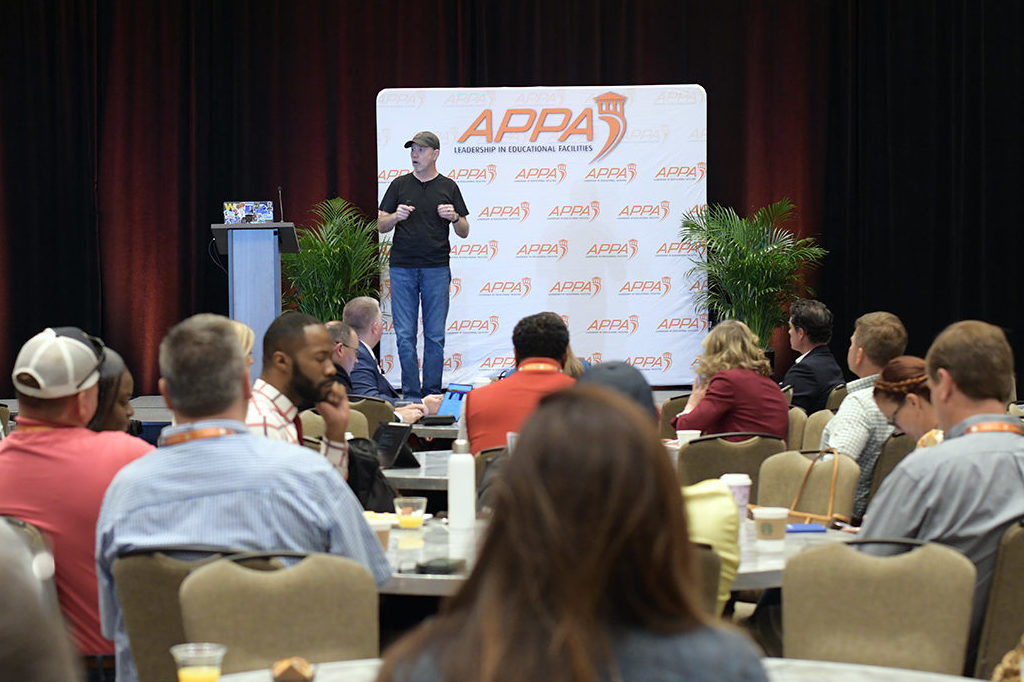How to Turn Frustration into a Movement for Positive Change

Kicking off APPA’s 2025 Spring Conference in New Orleans, futurist and award-winning author Rex Miller delivered a compelling keynote that inspired deep reflection and renewed energy among educational facilities professionals. With humor, honesty, and a powerful personal narrative, Miller invited the audience to turn their everyday frustrations into a force for transformational change.
Disruption Is Here — Now What?
Miller, who holds a master’s in strategic foresight, urged the audience to look beneath the surface of everyday disruptions and examine the deeper undercurrents reshaping our world. He noted that higher education still clings to a 500-year-old model — a system overdue for reinvention.
“We’re in the race, but we’re still in the buggy,” he quipped, contrasting medieval classrooms with modern ones that haven’t fundamentally changed.
Using vivid analogies — from oil tankers in the North Atlantic to social media’s disruption of presidential politics — Miller painted a picture of a world in flux. He challenged attendees to consider whether their learning environments are optimized for new media, AI, and the rising trend of professor-led podcasts and content creation.
From Stuck to Start: The Mindshift Framework
At the heart of Miller’s message was his Mindshift Framework, a six-step process for initiating change when the answers aren’t obvious:

- Identify what’s stuck or frustrating
- Find others who share your frustration
- Map the system
- Find outliers doing it differently and better
- Connect the dots
- Tell the story
Miller illustrated how this model helped him overcome near-bankruptcy early in his career, eventually leading to a nationally recognized movement for collaborative, trust-based construction processes.
“I wasn’t the smartest person in the room. I just got the right people talking to each other,” he said.
Resilience Over Efficiency
One of Miller’s central insights was a shift in focus from efficiency to resilience. Drawing on a story about ships designed to survive 50-foot waves in the North Atlantic, he emphasized that today’s institutions must be built to withstand turbulence — not just perform under ideal conditions.
“Are your people and your systems designed to take a hit and keep going? Or are you still optimizing the buggy?”
This message resonated strongly with an audience deeply familiar with deferred maintenance, shrinking budgets, and changing student needs.
Nudges and Sludges: Small Changes, Big Impact
Miller also introduced concepts from behavioral economics — nudges and sludges — that can dramatically reshape institutional culture and operations:
- Nudges are small design tweaks that guide people toward better outcomes.
- Sludges are friction points that waste time and energy.
He cited examples from Google and GoDaddy, where subtle adjustments to kitchens, onboarding, and employee interactions led to measurable increases in health, satisfaction, and productivity. He encouraged facilities leaders to audit their own organizations for similar opportunities.


A Room Full of Changemakers
Audience response was electric. Heads nodded, pens scribbled, and conversations buzzed long after the session ended. Many were struck by Miller’s ability to take something as abstract as “systems change” and make it practical, urgent, and deeply human.
“It wasn’t just a keynote — it was a call to action,” said one attendee. “He made you believe that real change is not only possible, but already waiting in the room.”
Miller closed by reminding attendees that the power to change systems isn’t held by a few at the top — it’s unlocked when people unite around shared frustrations and shared purpose.
“Never doubt that a small group of thoughtful, committed citizens can change the world. Indeed, it’s the only thing that ever has.” – Margaret Mead
 Login/myAPPA
Login/myAPPA
 Bookstore
Bookstore
 Search
Search  Translate
Translate 

